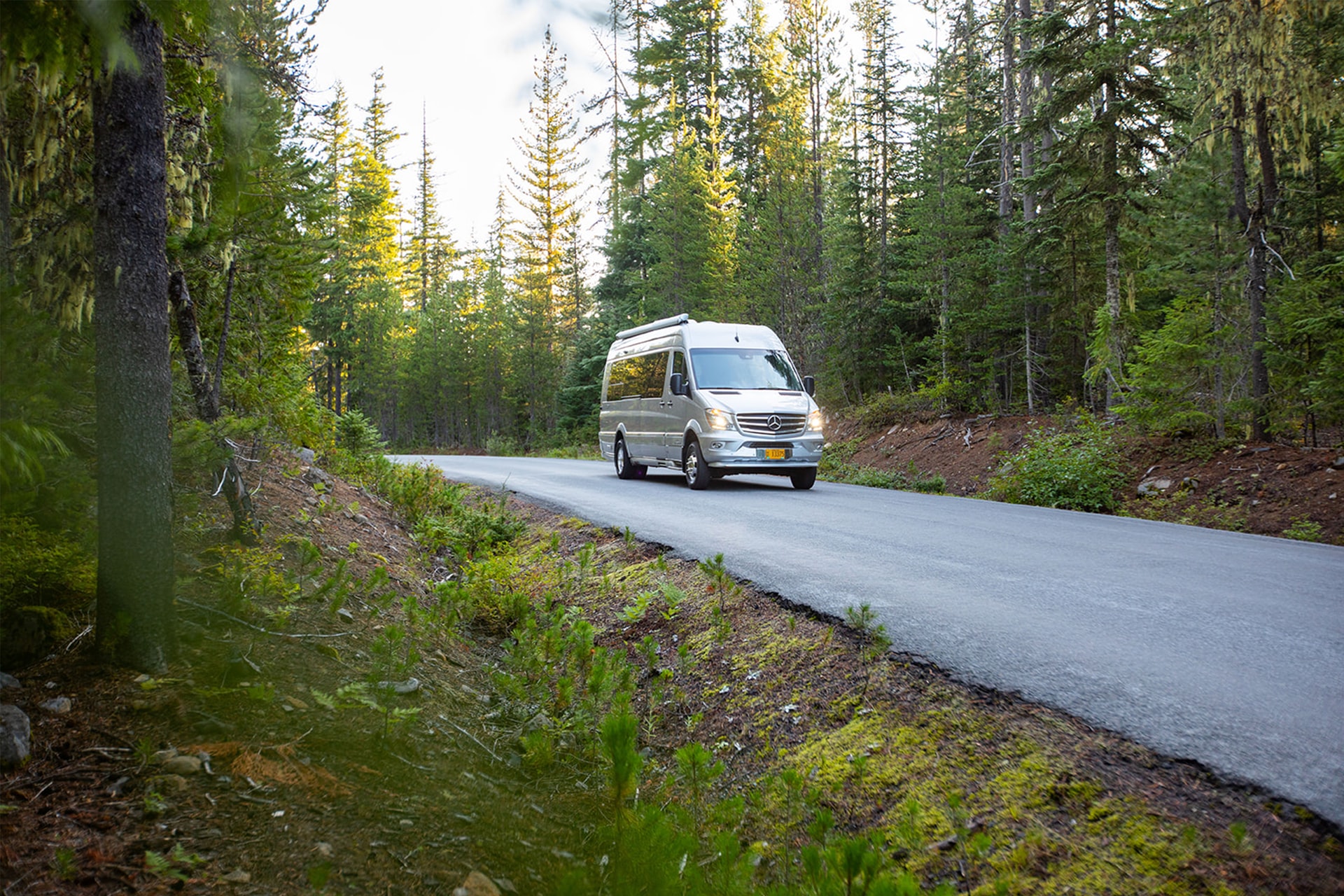There’s no wonder people love class B RVs. They’re nimble, streamlined, and fuel-efficient. You’d think they lack amenities due to their small size, but they actually have everything you may need, including restrooms, kitchens, and beds.
But all of that aside, what about their towing capacity?
Class B RVs are small, which means they aren’t the best towers out there. You can use them to tow a small boat or a motorcycle, but that’s as far as they can get.
If you want to find out more about class B towing capacity, here’s everything you may need to know.
What’s the Class B Towing Capacity?
Class B RVs can tow vehicles and trailers ranging from 3,000 to 5,000 pounds. The maximum varies according to your RV’s engine, total weight, and cargo limit. However, most of them stay at the 3,500 pounds mark.
For example, both the 2021 Winnebago Solis 59PX and the 2022 Thor Tellaro 20AT have a towing limit of 3,500 pounds. Meanwhile, the upgraded 2021 Winnebago Revel 44E is capable of pulling 5,000 pounds.
That towing capacity means class B RVs can tow motorcycles, snowmobiles, small boats, and ATVs.
Bear in mind that you should consider the cargo load when choosing the RV. Most RVs have their towing capacities calculated at their minimum load. This means that the capacity decreases if your RV is full of cargo or passengers. So, to tow the maximum capacity of your RV, you’ll need to have a minimal load on it.
Moreover, you’ll want to consider the RV’s size and weight. The heavier it is, the more weight it’ll be able to pull.
Class B Vs Class A Towing Capacity
Class A RVs have the highest towing capacity on the market. They have a towing range of 5,000 pounds to 20,000 pounds, varying according to the engine power and the overall size.
Needless to say, Class A RVs are the obvious choice if you’re towing heavy vehicles. But that also makes them larger and heavier than class B RVs. And of course, more expensive.
Plus, there’s a legal limit when it comes to the towing length. Because class A RVs are already tall, you won’t be able to tow vehicles that are too tall for the legal limit. Class B RVs won’t face these restrictions because they’re smaller.
In the end, it all boils down to what you need to tow. If you only tow small vehicles, and you don’t do it frequently, you’ll be better off with a class B RV.
How Does the Engine Affect the RV’s Towing Capacity?
When choosing your RV, you need to closely consider the engine’s power because it’s the primary factor that affects towing capacity. If the engine is powerful enough, your RV will be able to tow heavyweights just fine. If the engine can’t handle heavyweights, you’ll likely be sticking to the minimum towing capacity of your RV.
Generally, RVs with diesel engines are more powerful than RVs with gasoline engines. In other words, they’re more capable of towing heavyweights. That’s because diesel engines have higher torques, so they provide more pulling power.
If you only tend to tow snowmobiles or motorcycles, you’ll be okay with a gasoline engine.
How to Use a Class B RV to Tow a Car
If you want to tow a car using your class B RV, there’s more than one way to do it. However, it’s essential to calculate the overall weight of the car and determine whether your RV can handle it first. If it can, here are two ways to do it:
Flat Towing
You may see people referring to flat towing as toading or four-down towing; they’re all the same thing. The good thing about flat towing is that it doesn’t affect the RV’s gas mileage. On top of that, it’s one of the most affordable ways to tow a car because you’ll only need a tow bar.
All you have to do is attach the car you want to tow to the tow bar, then let it roll behind the RV safely. You’ll also want to use chains and cables for extra stability in case you’ll encounter slopes or bumpy grounds.
If you plan to frequently tow cars using your class B RV, there are a couple of accessories you may need. You’ll want to buy free-wheeling hubs if your vehicle is front-wheel-drive, or a cable-operated drive shaft if your vehicle is rear-wheel-drive. You may also need a disconnecting device.
Tow Dolly
The tow dolly does the same job as a tow bar, except that it’s more advanced. It’s basically a couple of bars connected by two wheels. To tow your car, the tow dolly will carry the front wheels, while the rear wheels will ride freely.
Like you probably realize by now, a tow dolly will only be suitable for small vehicles, like go-karts, gold karts, and small smart cars. It should be able to carry around 500–1500 pounds comfortably.
Tow dollies are more convenient than most towing equipment because of their built-in brake lights. They let vehicles behind know that you’re about to stop or take a turn, which is a much-needed facility for towing.
All that said, tow dollies take up considerable space, so you’ll want to think of somewhere to store them. They’re also a bit too heavy, so you probably won’t be able to lift them alone.
To Wrap Up
The class B towing capacity ranges from 3,000 pounds to 5,000 pounds, and it varies according to your RV’s engine, overall weight, and cargo.
If you have heavy cargo, you won’t be able to tow the maximum weight capacity of the RV. You’ll need to create a weight balance, which means that you’ll need to take some cargo off.
In all cases, make sure to consider all the essential factors before choosing your class B RV. The engine is the most critical factor to take into consideration.

